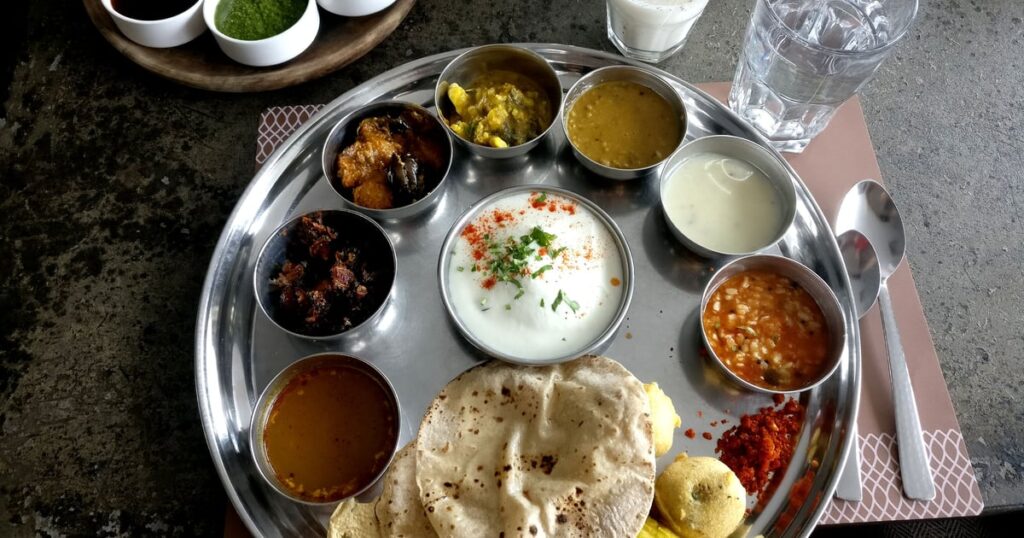The sumptuous and scrumptious Indian thali with rotis, rice, at least two curries, and curd is enough to get mouths watering. But it’s far from what a human needs to live a healthy life, according to new recommendations by the government body ICMR.
As per its new “My Plate of The Day”, the Indian medical research body recommends that vegetables, fruits, green leafy vegetables, roots, and tubers must form half of the plate per day. In reality, the average thali has 50–70% of cereals, while recommendations say cereal intake must be limited to 45%.
The average Indian meal also gets its protein—including pulses, eggs, and meat—wrong, at around 6–9%. The recommended levels are 14–15%. What Indians regularly eat is far from a healthy meal, with roti and bhaji taking precedence over the recommended vegetable–first diets for a healthy body.
“In fact, most Indian families consume only a few tablespoons of cooked vegetables per meal. That too, most of them overcook vegetables; do not blanch greens,” said Dr Kinjal Upadhyay, a nutritionist from Mumbai.
The salad portion of an Indian thali, like the bhaji or subji, is also eaten as an accompaniment, unlike in Continental meals, where salads make up a course within the meal.
Vegetable consumption in India is low in quantity as well as variety, according to experts. Add in modern eating lifestyles, and vegetable and fruit consumption goes down even lower.
“The positive side of an Indian diet is that cooked vegetables follow vegetable guidelines. However, given the modern lifestyle, most people have the tendency to consume fewer vegetables. Ideally, a healthy diet comprises equal portions—50% vegetables and on a plate. The other concerning fact is the inadequate consumption of vegetables based on variety,” said Deepak Pal, sports and functional nutritionist at SENS Clinic.

